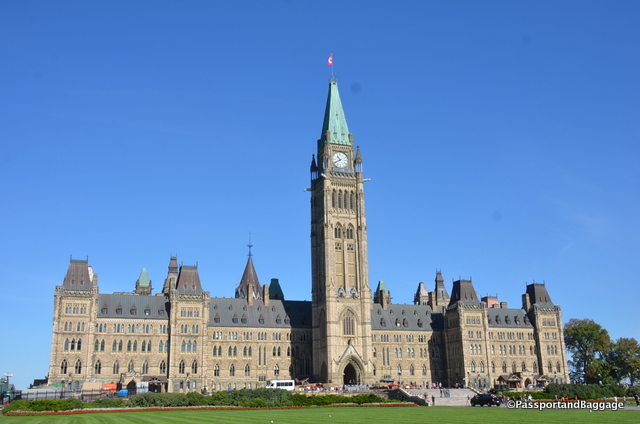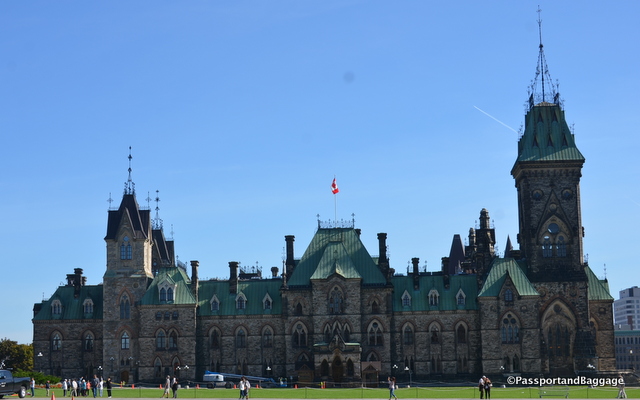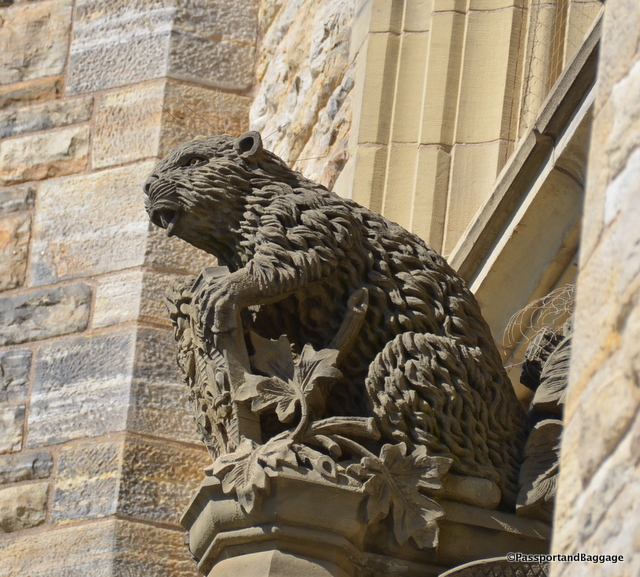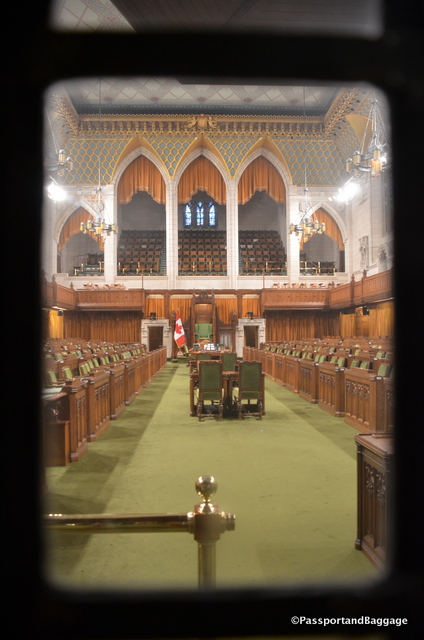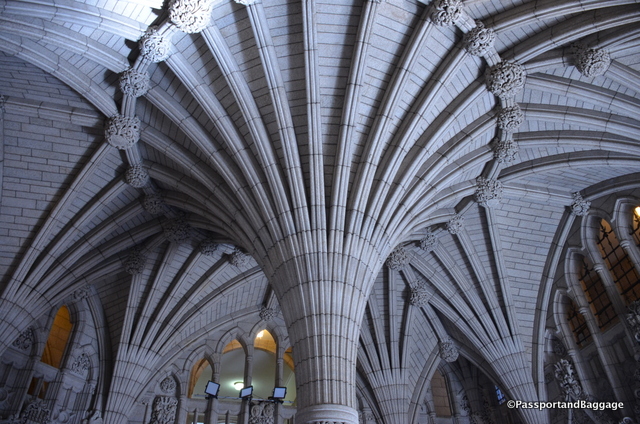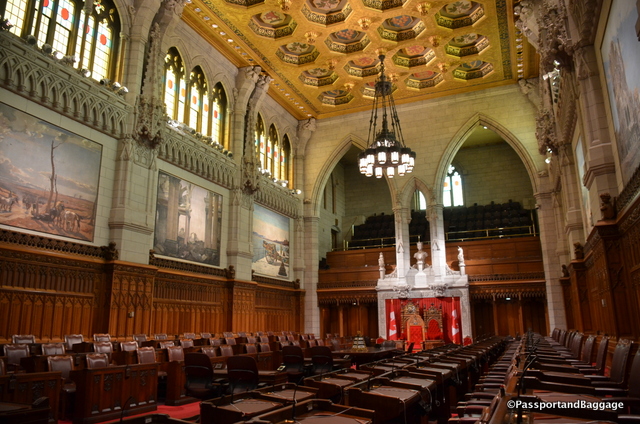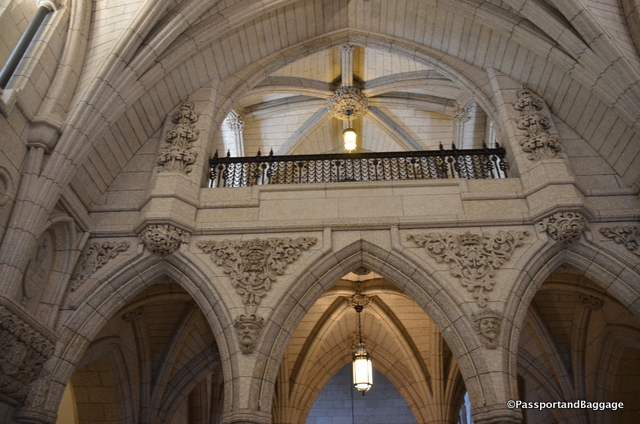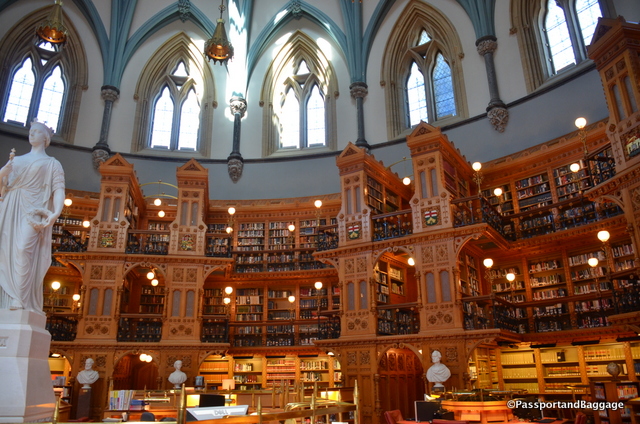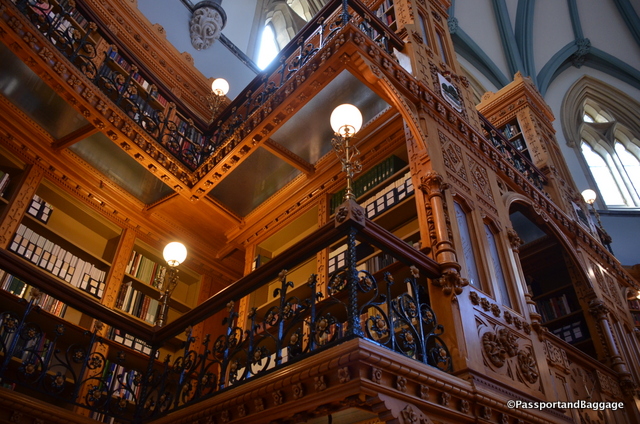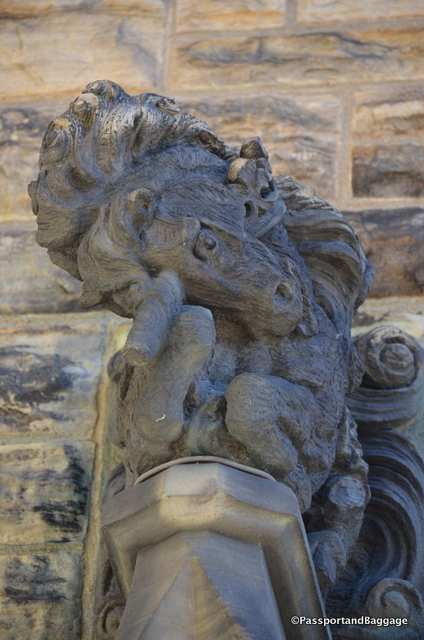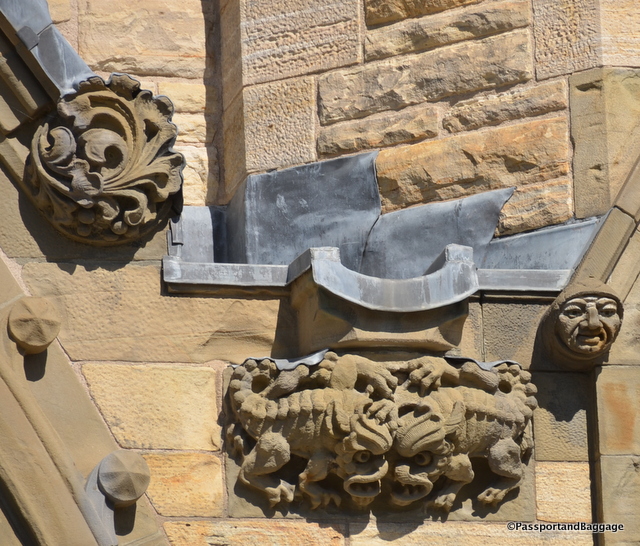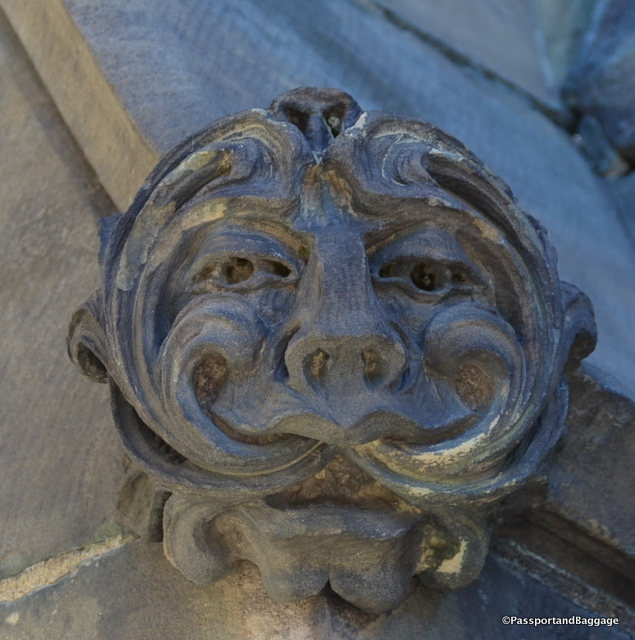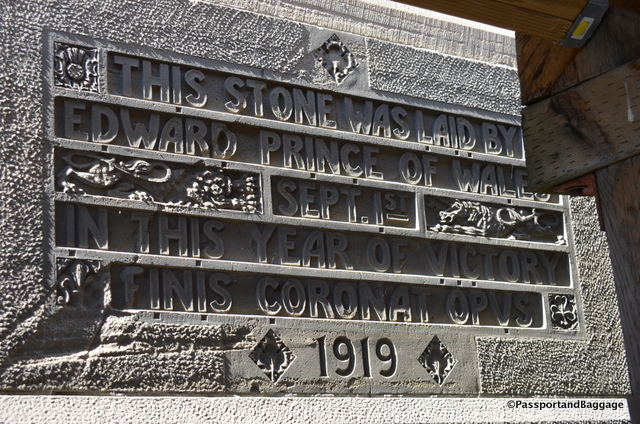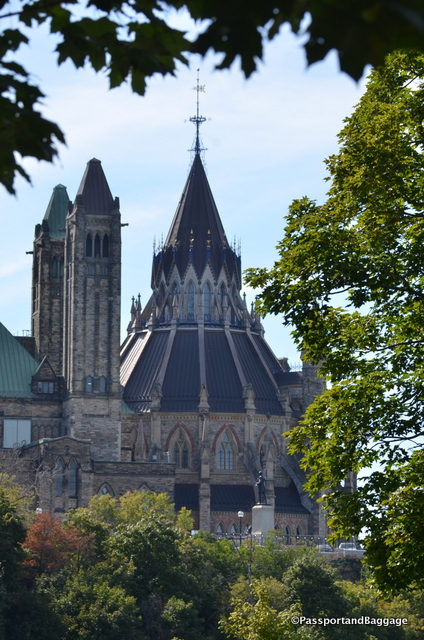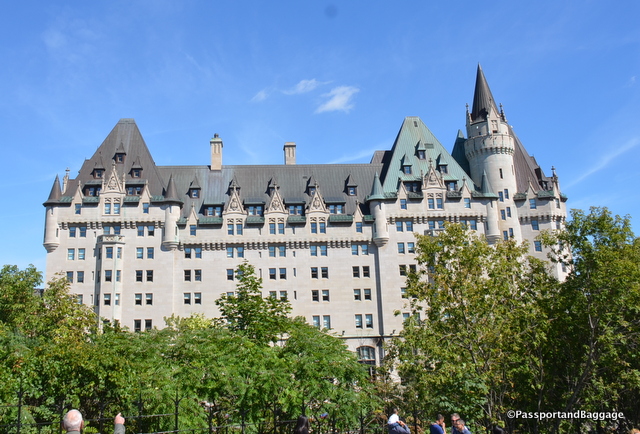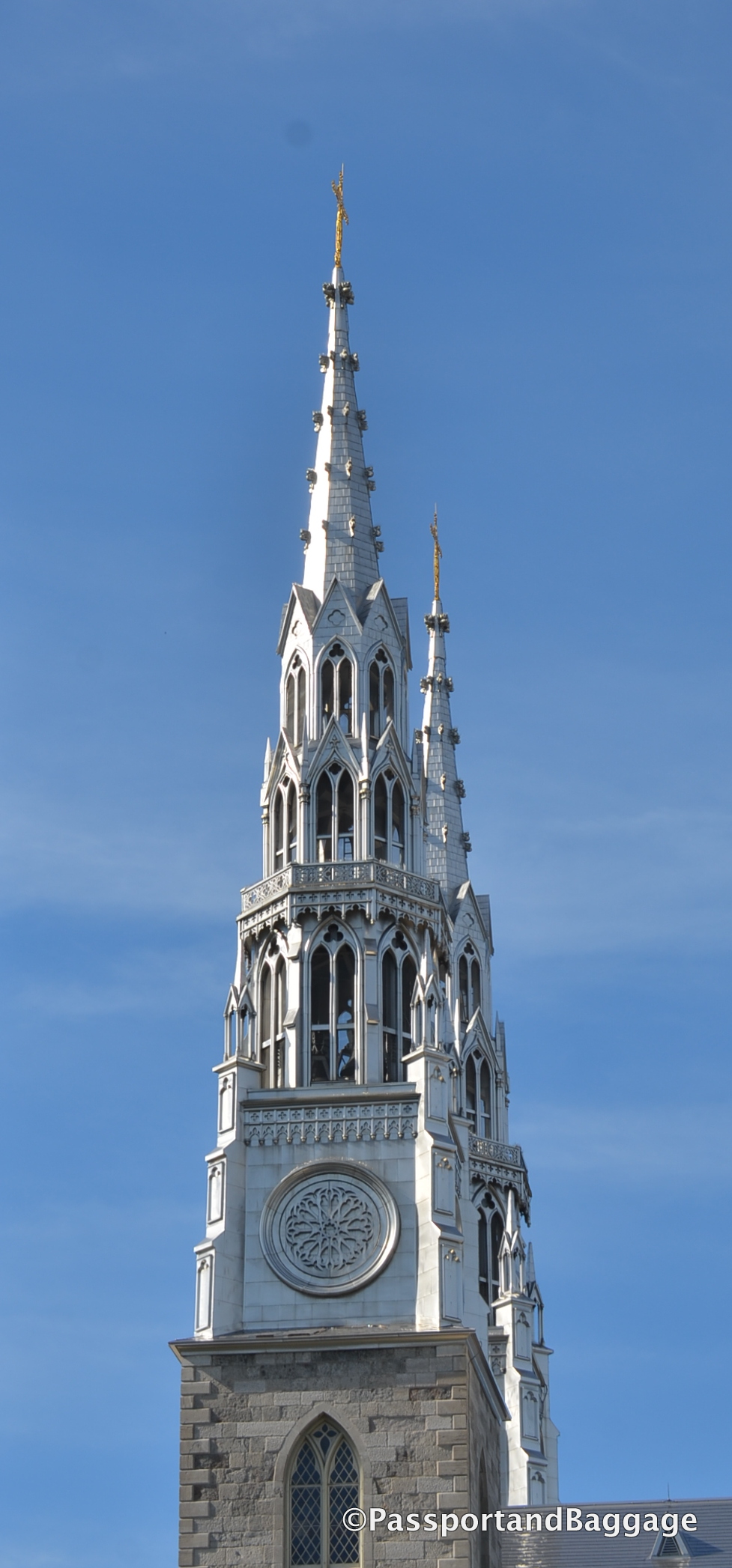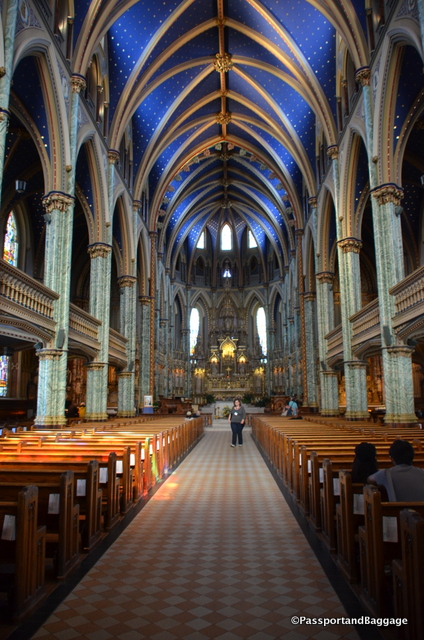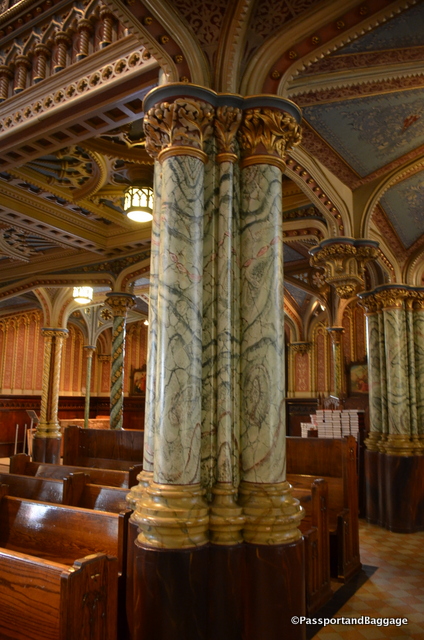September 16, 2016
In 1841, Lower Canada (now Quebec) and Upper Canada (now Ontario) joined to form the Province of Canada. Its seat of government alternated for many years. In 1857, Queen Victoria was asked to select a permanent capital. Surprisingly, the Queen chose the lumber town of Ottawa over the established cities of Toronto, Kingston, Montréal and Québec City. Ottawa was obviously a political compromise but more importantly it was farther away from the American border.
The Center, East and West blocks of the Parliament Buildings were built between 1859 and 1866 (excluding the Tower and Library).
A fire took place in 1916 and burned the center building down, the library was saved, but seven people lost their lives.
The new structure, designed in the Modern Gothic Revival style by John Pearson and Jean Omer Marchand, was completed by 1922. The Peace Tower was finished later in 1927.
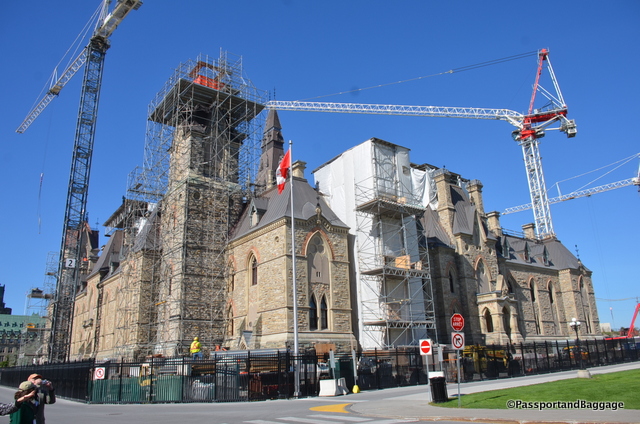
The West Block contains offices for parliamentarians. Built in the Victorian High Gothic style, the West Block has been extended twice since its original completion in 1865. The building appears on the obverse of the Canadian five-dollar bill and is presently undergoing a $863 million restoration, scheduled to be completed in 2017.
The ceremonial entrance to the Center Block contains a magnificent archway of carvings designed by the first Dominion Sculptor, Cleophas Soucy, and his assistant, Coeur de Lion McCarthy under the direction of Alan Keefer, a noted architect for the Department of Public Works. The intricate designs around the door were carved between 1937 and 1938 by a team of six carvers, along with Soucy and McCarthy. This beaver, a symbol of Canada was done by Cleophas Soucy.
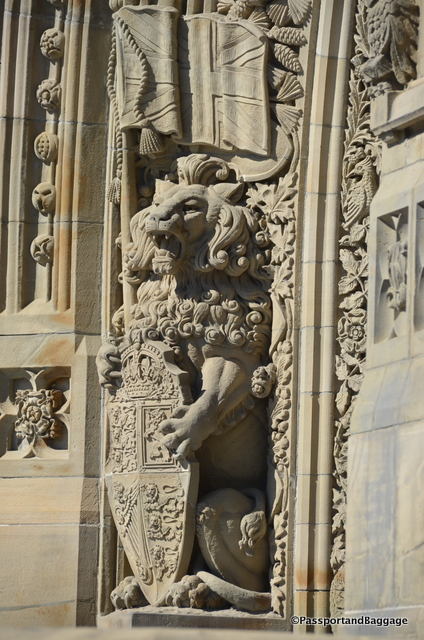
The archway is flanked by on either side by a lion and a unicorn. Known as “supporters” in heraldry, these two beasts are found on the Arms of Canada as well as the United Kingdom. The Lion carries a Union flag and supports the Royal Arms, while the unicorn carries the Royal flag of France and supports the Arms of Canada.
The House of Commons is in the Center Block of the Parliament Buildings. Decorated in Green as is the British House of Commons, it presently has 338 members, and is fast growing out of its present space.
The Senate is modelled after the British House of Lords and consists of 105 members appointed by the Governor General on the advice of the Prime Minister. The Senate has a higher representation of minorities because the seats are appointed.
The Library is one of the more magnificent rooms in the Center Block. Designed in the High Gothic Revival style by Thomas Fuller and Chilean James, the library opened in 1876. The circular shape and use of galleries and alcoves came from the first Parliamentary Librarian Alphas Todd. He also wisely suggested it be separated from the main building to protect it from fire. Due to this fact, and two huge metal doors, the library was saved from the fire that destroyed the rest of the building. The library underwent a four year restoration and was reopened in 2006. The library is for the sole use of Parliamentarians.
Some other sights found in the Center Block of the Parliament Buidlings.
*

There are four gargoyles on the Peace Tower, three of them are typical, why this one is different I have been unable to find out.
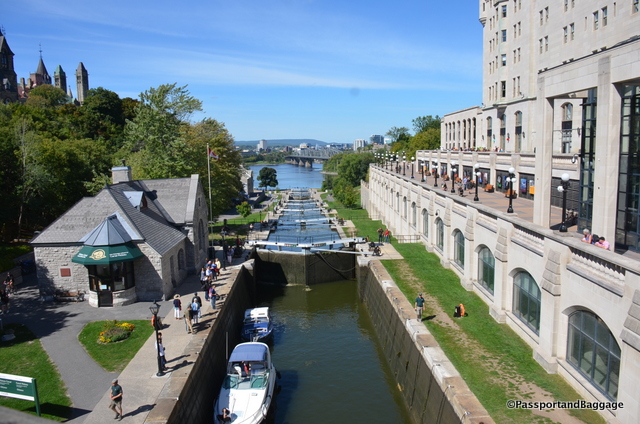 Running behind the East Block of Parliament is the Rideau Canal connecting the city of Ottawa to the city of Kingston on Lake Ontario. It is 125 miles long and derives its name from the French word for curtain. The canal system uses sections of two rivers, the Rideau and the Cataraqui, as well as several lakes.
Running behind the East Block of Parliament is the Rideau Canal connecting the city of Ottawa to the city of Kingston on Lake Ontario. It is 125 miles long and derives its name from the French word for curtain. The canal system uses sections of two rivers, the Rideau and the Cataraqui, as well as several lakes.
The canal was opened in 1832 as a precaution in case of war with the United States. It remains in use today primarily for pleasure boating, with most of its original structures intact and is operated by Parks Canada. It is the oldest continuously operated canal system in North America, and in 2007 it was registered as a UNESCO World Heritage Site.
Across the Canal is the Château Laurier, commissioned by Grand Trunk Railway president Charles Melville Hays, and constructed for $2 million, between 1909 and 1912. When the hotel first opened, private rooms cost $2 a night; 155 of the 350 bedrooms featured a private bath while the other 104 rooms had washstands with hot and cold water connections. In addition dormitories and common bathrooms were available as were rooms for travelling salesmen with sample tables to display goods. Today it is a Fairmont Hotel.
The main structure of Notre Dame Cathedral was completed in 1846. In 1859, Father Damase Dandurand, OMI, designed the two Gothic spires which were added to the west front in 1866. The steeples are covered with tin, which is typical for French-Canadian churches. The ornate interior was designed by Georges Buillon.
*
Ottawa was founded in 1826 as Bytown, and incorporated as “Ottawa” in 1855, the city has evolved into a political and technological center of Canada. The city name “Ottawa” was chosen in reference to the Ottawa River nearby, which is a word derived from the Algonquin word Odawa, meaning “to trade”.
The city is the most educated in Canada, and it is home to a number of post-secondary, research, and cultural institutions, including the National Arts Centre and the National Gallery. Ottawa also has the highest standard of living in the nation and low unemployment.
The town is walkable, approachable and architecturally wonderful.
